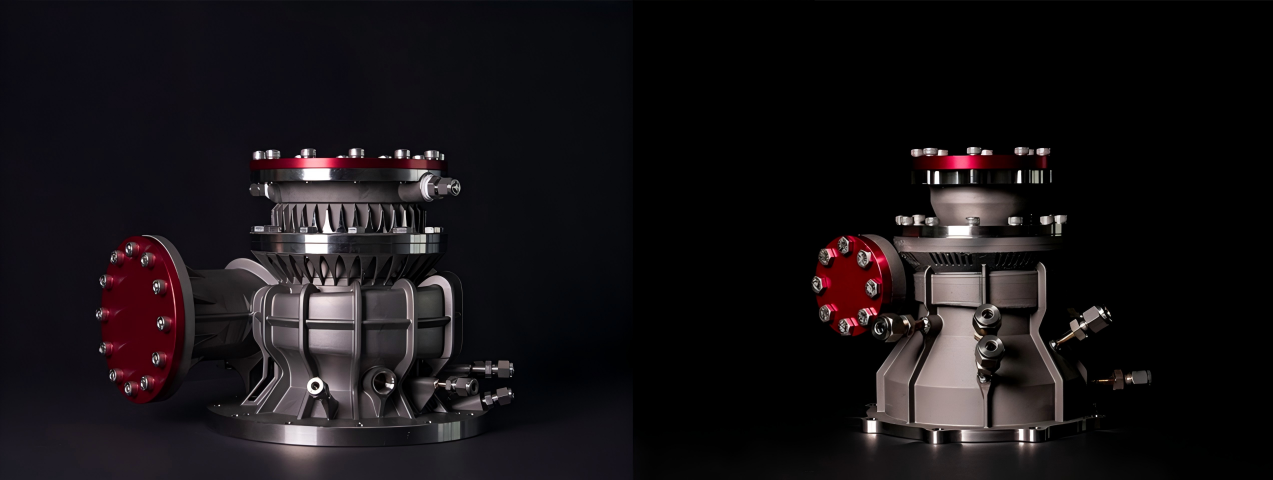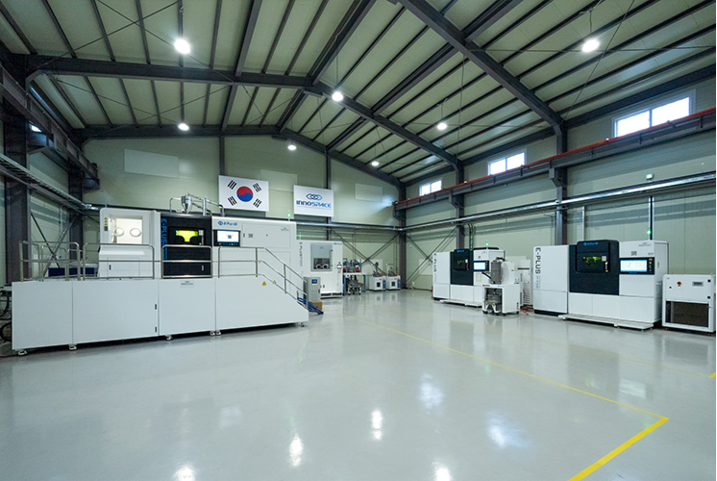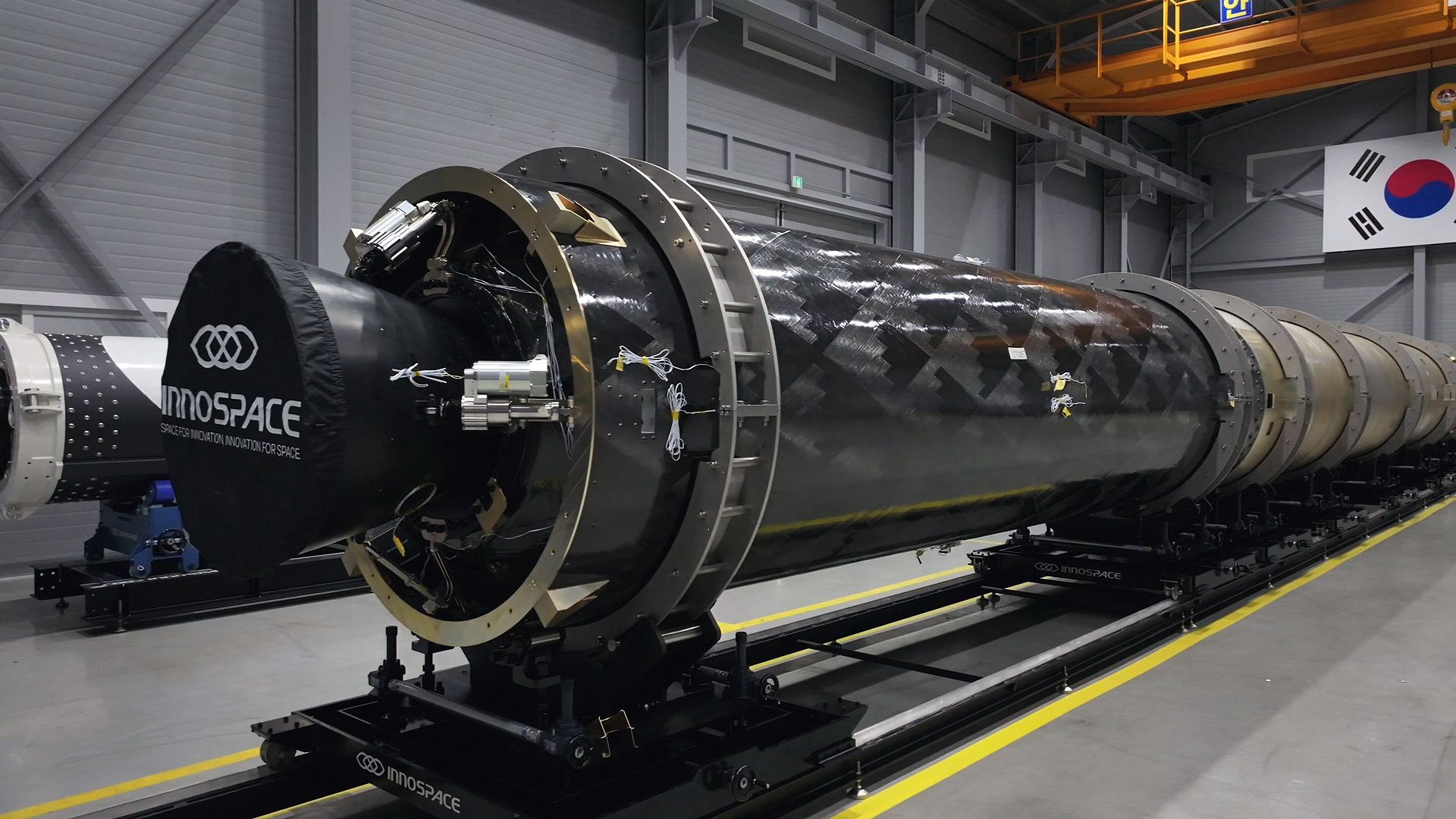INNOSPACE, a space company from South Korea, is now using metal 3D printing to make rocket parts faster, cheaper, and more efficiently, entirely in-house for the first time. After purchasing three high-end metal 3D printers from Chinese manufacturer Eplus3D, INNOSPACE has launched a new Advanced Manufacturing Division dedicated to building rocket parts in-house. This marks the company’s shift from relying on external suppliers, like Staco or GE Colibrim Additive, to producing critical components entirely under its roof.
This is the first time INNOSPACE has taken full control of its metal additive manufacturing (AM). This move allows it to speed up production, cut costs, and respond better to the growing demand for small satellite launches.
The company has already 3D printed components for its HANBIT rocket family, a next-generation line of hybrid-propellant launch vehicles that includes the orbital-capable HANBIT‑Nano, HANBIT‑Micro, and HANBIT‑Mini models. These two-stage rockets are designed to deliver small satellites to sun-synchronous orbits ranging from 90 kg (Nano) to over 1,300 kilograms (Mini), with debut launches planned through 2026. It is also laying the groundwork for serial production, making rocket parts continuously.
In the world of space launch services, speed and cost matter more than ever. The number of small satellites going into orbit is growing fast, and many companies are looking for cheaper, more flexible launch options. INNOSPACE hopes to fill that need with hybrid rockets, vehicles that combine the best of liquid and solid rocket technology.
But building rockets using traditional methods can be slow and expensive. That’s why INNOSPACE turned to 3D printing.
“By applying 3D printing technology, we expect to achieve part lightweighting that reduces rocket mass and increases payload capacity,” said Soojong Kim, founder and CEO of INNOSPACE. “This will allow customers to transport more satellites at a lower cost, which will positively impact future revenue.”

Oxidizer Pumps for the HANBIT-Nano 3D printed with Eplus3D systems [First Stage (Left), Second Stage (Right)].
INNOSPACE has already 3D printed and delivered 13 key components for its HANBIT rocket, including complex oxidizer pumps used in the rocket’s first and second stages. These are highly technical parts needed for feeding fuel into the engine. By using Eplus3D’s Metal Powder Bed Fusion (MPBF) technology, the company expects to cut production costs by up to 50%, while also improving the reliability and consistency of each part.
To do this, INNOSPACE has adopted three metal 3D printers from Eplus3D to establish its in-house manufacturing system: one large-format EP‑M450 and two medium-sized EP‑M300 machines. The EP‑M450 is designed for printing significant structural components in one piece, reducing the need for multi-part assembly and welding, and ultimately boosting both strength and production efficiency.
Meanwhile, the EP‑M300 printers are great for making smaller, highly detailed parts. This makes the setup flexible enough to produce everything from main engine parts to complex pieces for the fuel system. All the machines work with strong, aerospace-grade metals and meet the tough standards needed for lightweight, heat-resistant, and precise components.
All of this work is happening at INNOSPACE’s Hwaseong Campus, where the company recently launched its Advanced Manufacturing Division. After passing strict quality tests that meet international aerospace standards, specifically ISO/ASTM 52941-20, the division is now fully operational and ready for serial production, which means INNOSPACE can manufacture rocket parts continuously and at scale.
“The new division marks a pivotal milestone in internalizing production of core components, including launch vehicle engines, securing our unique competitiveness in launch service. By applying 3D printing technology, we expect to achieve part lightweighting that reduces rocket mass and increases payload capacity, allowing customers to transport more satellites at a lower cost. This will positively impact future revenue generation. It also has the potential to expand into high-value-added industries beyond aerospace and defense, including automotive and semiconductors, further enhancing INNOSPACE’s commercialization competitiveness,” explained Kim.

INNOSAPCE’s Hwaseong Campus, Advanced Manufacturing Division, equipped with Eplus3D metal 3D printers.
In fact, INNOSPACE has three main goals for the rest of the year. First, they want to fully ramp up production of rocket engines and key parts using 3D printing. Second, they plan to build a quality system that uses data to make sure every part is made exactly right. And third, they aim to lower costs and speed up production even more, so they can stay competitive in the growing space industry.
Meanwhile, Eplus3D will continue to provide technical support, helping INNOSPACE get the most out of its 3D printers. As South Korea’s space industry grows and more small satellites need to reach orbit, INNOSPACE’s use of 3D printing could help the company build rockets faster and support the country’s role in the global launch market.
Images courtesy of Innospace


